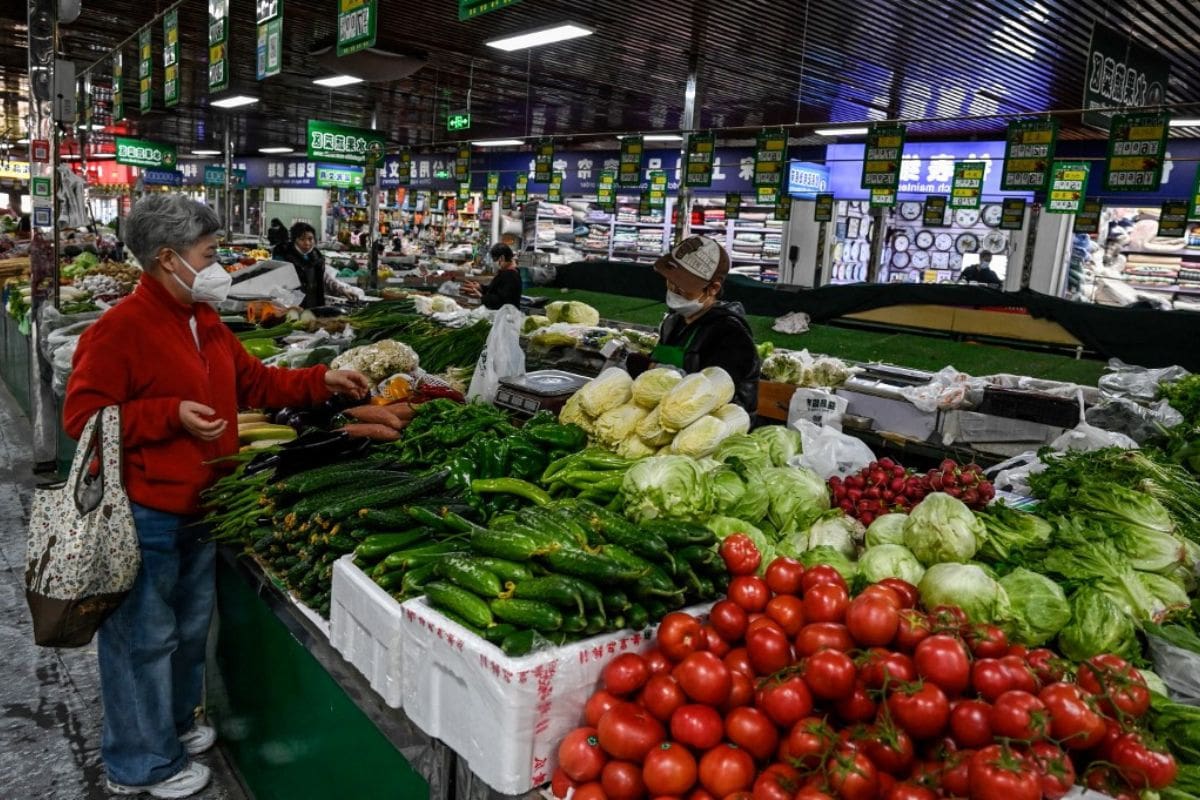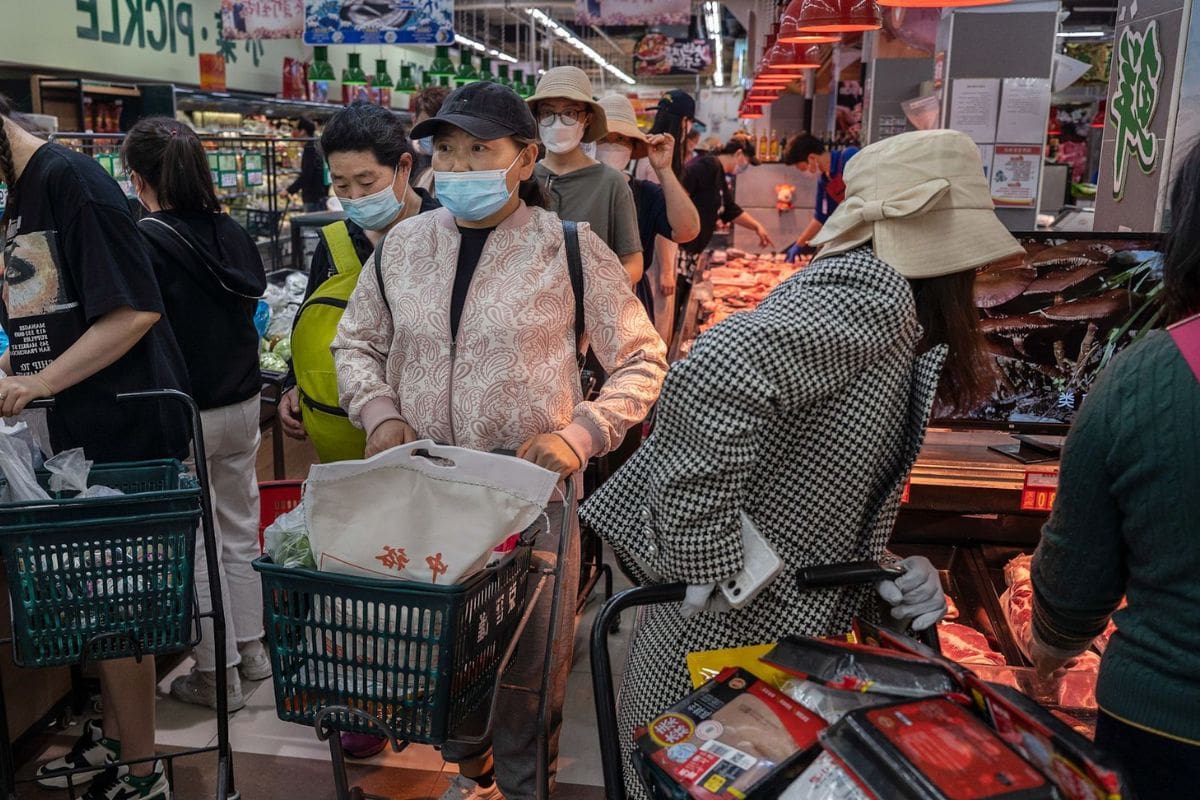China’s consumer prices have recently experienced a historic plunge, sending shockwaves through global markets and igniting fears of deflation. This unprecedented decline in consumer prices, the steepest in over 14 years, has raised concerns about the health of China’s economy and its ability to recover from the impact of the COVID-19 pandemic.
As analysts warn of persistent deflationary risks, the country’s struggle to regain economic momentum becomes increasingly apparent. In response, Beijing has implemented measures to support its fragile economy, but the threat of factory deflation looms large, posing challenges for businesses amidst intense competition.
The implications of China’s consumer price plunge and the potential for deflationary pressures demand closer examination as they have far-reaching implications not only for the Chinese economy but also for the global economic landscape.
Key Takeaways
- China experiences its steepest decline in consumer prices in over 14 years, with a significant 0.8% year-on-year drop in the Consumer Price Index (CPI).
- The decline in consumer prices is primarily driven by a sharp decrease in food prices, which account for a substantial portion of Chinese household expenditure.
- Analysts warn of persistent deflationary risks in China, which can lead to reduced consumer spending and lower investment.
- The Beijing government is taking decisive action to support China’s fragile economy, implementing measures such as a cut to bank reserves and calling for additional broad-based interest rate cuts.
Economic Headwinds: China Faces Steepest Consumer Price Decline in Over 14 Years
China is currently grappling with its most severe decline in consumer prices in over 14 years. The National Bureau of Statistics (NBS) reports a significant 0.8% year-on-year drop in the Consumer Price Index (CPI), primarily driven by a sharp decrease in food prices.

Also Read: US Consumer Prices Defy Expectations, Nudging Fed Away from Rate Cuts
This decline in consumer prices marks a concerning trend for the Chinese economy, as analysts express fears of deflation taking hold. Deflation is a persistent decrease in general price levels, which can lead to reduced consumer spending, lower investment, and a downward spiral in economic activity.
The drop in food prices is particularly significant, as food accounts for a substantial portion of Chinese household expenditure. As a result, policymakers face the challenge of stimulating consumer spending and boosting economic growth to counteract the potential entrenchment of deflationary pressures.
Deflationary Risks Loom: Analysts Warn of Persistent Economic Challenges
As China grapples with its most severe decline in consumer prices in over 14 years, analysts are sounding the alarm over persistent deflationary risks and the resulting economic challenges. The following factors contribute to the looming deflationary risks and their potential impact on the Chinese economy:
- The Consumer Price Index (CPI) data indicates a persistent deflationary pressure, as highlighted by analysts like Zhiwei Zhang from Pinpoint Asset Management.
- There is a growing concern that deflationary expectations might become entrenched among consumers, posing a substantial threat to economic stability.
- Weak consumer behavior can be attributed to various factors, including the deepening property crisis, local government debt risks, and a challenging global demand environment.
These factors collectively raise concerns about the potential long-term impact of deflation on the Chinese economy, highlighting the need for effective policy measures to address these persistent economic challenges.
Economic Growth Stumbles: China’s Struggle to Regain Momentum After COVID
Despite achieving a 5.2% growth in 2023, China’s post-COVID economic recovery has faced significant hurdles in regaining momentum.
The country’s economic performance has been less robust than anticipated, dampened by various challenges. Nervous investors have reacted to the deepening property crisis and local government debt risks, leading to fluctuations in Chinese stocks.

Additionally, global demand remains soft, with the manufacturing sector contracting in January. These factors have further added to the struggles faced by the Asian giant in revitalizing its economy.
It is evident that China’s path to regaining momentum after the COVID-19 pandemic has been far from smooth, highlighting the ongoing difficulties and uncertainties in its economic growth trajectory.
Central Bank Measures: Beijing Acts to Support Fragile Economy
The Beijing government takes decisive action to support China’s fragile economy by implementing significant measures through the central bank. These measures include the most significant cut to bank reserves in two years, signaling a strong support for the economy.
Analysts argue that additional measures are necessary to boost confidence and demand, highlighting the need for broad-based interest rate cuts. Moreover, core inflation, which excludes volatile food and energy prices, has shown a slight decrease, further calling for more decisive policy support.
The central bank’s actions aim to provide stability and stimulate economic growth amidst concerns of deflation. By implementing these measures, the Beijing government demonstrates its commitment to maintaining the health of the economy and ensuring the well-being of its citizens.
Factory Deflation Threatens Businesses: Producer Prices Slide Amid Intense Competition
Factory deflation poses a significant threat to businesses as producer prices continue to slide amidst intense competition in China’s market. The Producer Price Index (PPI) recorded a 2.5% year-on-year decline in January, highlighting the challenges faced by manufacturers in trying to recover lost business.
The falling factory gate prices indicate persistent deflationary trends and the intensifying price wars for smaller Chinese exporters. Analysts, including Carlos Casanova from Union Bancaire Privee, are emphasizing the need for stronger policy support from the People’s Bank of China to safeguard smaller exporters amid the relentless price competition.

With competition escalating, businesses are under pressure to cut prices, which further exacerbates the deflationary environment. It is crucial for policymakers and businesses to address this issue to ensure the stability and growth of the Chinese economy.
Conclusion Of China’s Consumer Prices
China’s historic plunge in consumer prices has raised concerns about deflation and the persistence of economic challenges. The country’s struggle to regain momentum after the COVID-19 pandemic has been further complicated by factory deflation and intense competition.
To support the fragile economy, Beijing has implemented measures, but the path to economic recovery remains uncertain.
Our Reader’s Queries
Q1 Why does China experience deflation?
A This is likely due to inadequate aggregate demand, with consumption, investment, and net exports falling significantly below expectations. The deflation resulting from insufficient aggregate demand poses a significant concern for China, as it has the potential to trigger a negative cycle in economic activity.
Q2 Does China’s deflation worsens as economic pressures mount?
A China experienced a 0.5 percent year-on-year decline in consumer prices, marking the most substantial drop in three years. This comes as the world’s second-largest economy contends with an escalating deflationary challenge.
Q3 What is the Inflation Rate for consumer prices in China?
A In comparison to the corresponding month in the prior year, China witnessed a monthly inflation rate of -0.3 percent. Although inflation reached its highest point at 2.8 percent in September 2022, it has since shown a decline. The annual average inflation rate for China fluctuated around 0.2 percent in 2023.

